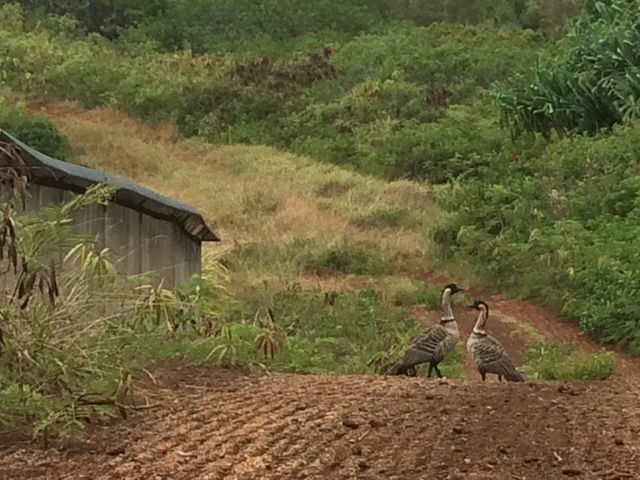KILAUEA — Nihoku’s predator-proof fence within the Kilauea Point National Wildlife Refuge isn’t the only enclosure in the state dedicated to conserving Hawaii’s endangered seabirds. In fact, a new enclosure has been added to the network of enclosures on Kauai,
KILAUEA — Nihoku’s predator-proof fence within the Kilauea Point National Wildlife Refuge isn’t the only enclosure in the state dedicated to conserving Hawaii’s endangered seabirds.
In fact, a new enclosure has been added to the network of enclosures on Kauai, Maui and Oahu. It’s on the slopes of the Big Island’s Mauna Loa, and it’s the biggest one yet.
The new enclosure protects 600 acres of Hawaii Volcanoes National Park with a six-foot fence that spans five miles. The remote mountain site is at elevations between 8,000 and 10,000 feet.
“I think the construction teams deserve a huge round of applause for managing to complete the project,” said Andre Raine, of Kauai Endangered Seabird Recovery Project. “The fence will be a major benefit, not only to Hawaii petrels, but also to other native and endangered bird species breeding in the area.”
The fence at Mauna Loa, which has been in the works since 2013, is focused on protecting habitat for the endangered ‘ua’u, or native storm petrel, from predators.
Like many of Hawaii’s endangered seabirds, ‘ua’u spend much of their lives at sea and return to land only to breed and nest. ‘Ua’u usually arrive back to their terrestrial birthplaces in April to prepare nests in the lava rock and return in early June for egg-laying.
Ground-nesting birds are at risk to predation, particularly from cats and the chicks that hatch in August and stay in the burrow until November are also at risk.
Conserving the endangered seabirds — including the Newell’s shearwaters — is a “multi-faceted approach,” according to Lindsay Young, of Pacific Rim Conservation.
Young had a hand in the recent translocation of 20 Hawaiian petrels to inside the predator-proof enclosure at Nihoku on Kauai.
“Translocation is one of many actions being done to help these species with the goal being to create a predator-free colony for them,” Young said. “I mention other conservation actions as you can’t do this without existing predator control in the mountains and other conservation measures.”
Though the two fence projects have similar goals, there are key differences between the two enclosures, according to Chris Farmer, Hawaii program director of American Bird Conservancy.
First, Nihoku is a predator-proof fence with tight mesh and a rigid overhanging hood, so mice and rodents can’t get through or over. Mauna Loa’s fence is a cat-proof fence. It has “more standard-looking” chain-link, with a floppy over-hang so cats can’t hang over, Farmer said.
Both have a portion of the fence that’s buried.
The location of these two sites is also different; Nihoku is located near sea level and on a site with soil and vegetation. The site of the Mauna Loa fence is composed of lava and is at high elevations, making construction more difficult.
Second, the Mauna Loa site has an existing ‘ua’u colony, which is already much larger than Nihoku’s petrel colony, which is being created through translocation.
Last, the Nihoku site will support both ‘a’o (Newell’s shearwater) and ‘ua’u, while the Mauna Loa will focus specifically on ‘ua’u rehabilitation.
Though there are differences, the two enclosures are both contributing to a bigger conversation about seabird conservation in the state.
“These two new fence projects are both critical to protecting the ‘ua’u and helping this endangered species increase,” Farmer said. “Having healthy, increasing colonies on both Kauai and the Big Island is the conservation embodiment of not putting all our eggs, or petrels, in one place.”


